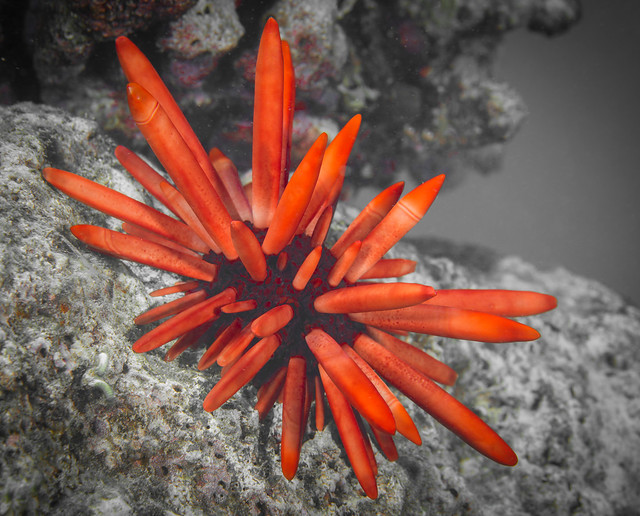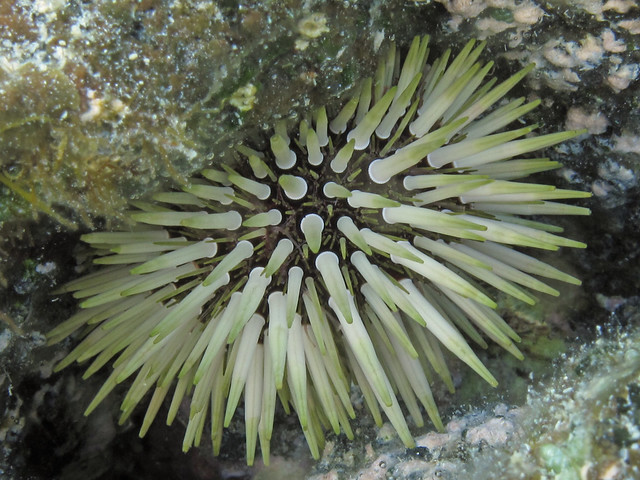(photo by Emily Miller Kauai)
So, recently I've gotten a bunch of questions about these peculiar sea urchins via email-and so I thought today might be a good time to re-visit them.I've written the biology and resistance of these neat sea urchins before in one of my earliest posts (go here!)
Long story short:
1. SEA URCHINS with PLATE-LIKE spines!
2. NAME of the most commonly encountered species is Colobocentrotus atratus, called kaupali in Hawaii
3. HOLD ON TO BOTTOMS in shallow but rough seas at the edge of wave-swept rock like this...
4. LIVE IN CENTRAL/SOUTH INDO-PACIFIC From Hawaii, Japan to the Indian Ocean
Don't believe me that these are actually sea urchins?? here's a nice video that shows the underside with tube feet and everything! Note this species is the Asian C. mertensi.
Here are some NICE close ups of Colobocentrotus atratus showing the plates (photo by Ken-ichi)
Another excellent close photo up by "Fishandfungi"
and yet another by Alan Cressler
This species often occurs in these clusters.. presumably to conserve moisture..
(photo by KCClarke)
(photo by Emily Miller Kauai)
Here are some from Christmas Island in the Indian Ocean (that's Northwest of Australia)
(above photos by MerMate)
Here's a nice little video about Colobocentrotus from Reunion Island
Colobocentrotus mertenseni also called ジンガサウニ or Jingasauni
(image above from this Japanese photo image site)
This species has more widely distributed plates (which also seem to be a slightly different shape) and dried and preserved animal are this curious green color...Here..we see one that is partly denuded (i.e., spines removed) showing the urchin beneath...
The specimen above is from Taiwan, image from the Digital Museum of Nature & Culture
How cool is Colobocentrotus?? Well, Mozambique put them on a stamp!!














